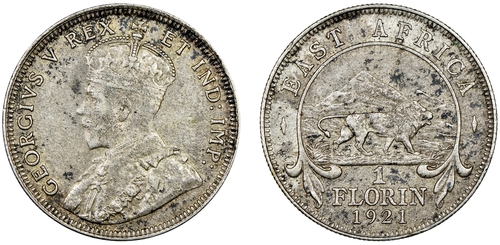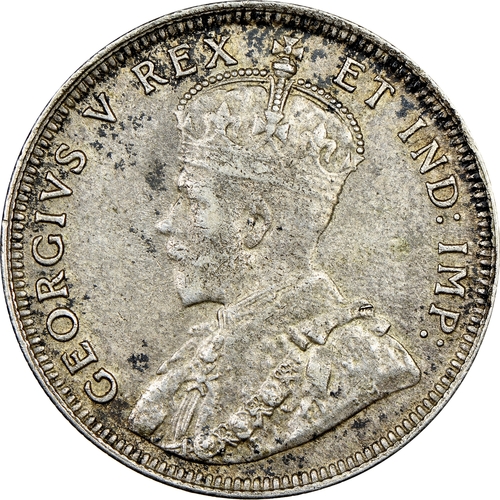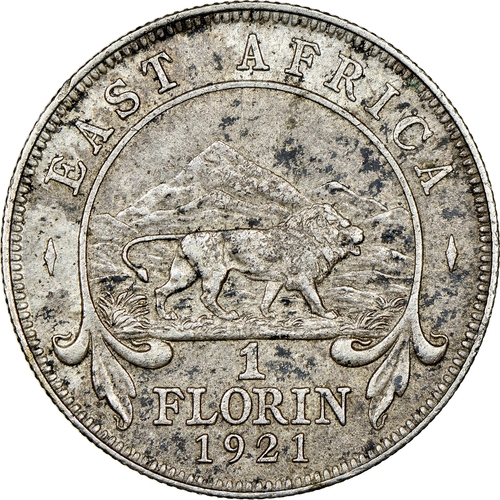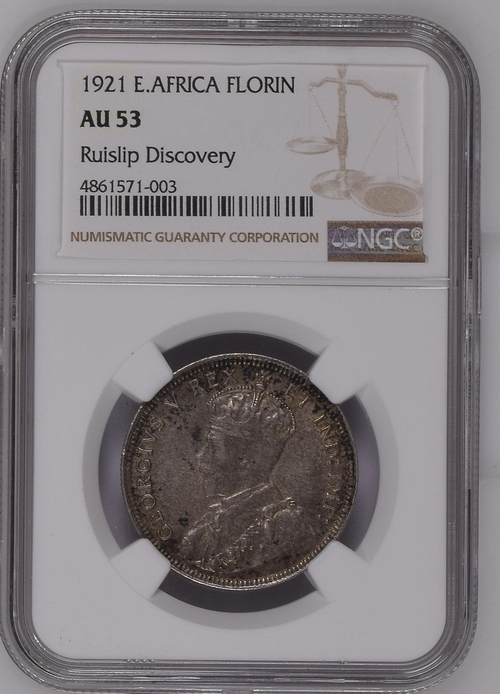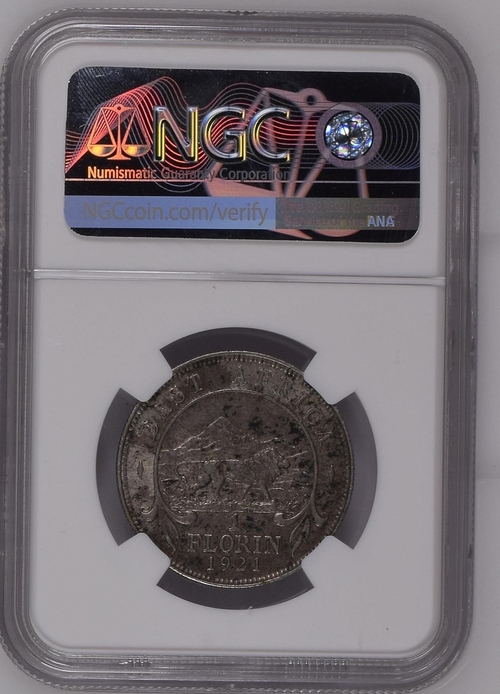Auction: 25055 - British Medals and World Coins featuring The Hurter-Amman Collection of Ancient and European Gold
Lot: 777
NGC AU53 | Imperial Protectorate of Kenya, British East Africa, George V (1910-1936), Trial or Pattern Florin, 1921, by Sir Edgar Bertram Mackennal and George William de Saulles, Royal Mint [Tower of London], GEORGIVS V REX ET IND IMP, King left, wearing the Imperial Crown and ermine Robe of State, the Collar of the Most Noble Order of the Garter and the Badge of the Most Honourable Order of the Bath, rev. EAST AFRICA, male "East-Southern African" lion prowling right, dormant volcano Mount Muhavura behind, all inside down-turned floral volute, 1 FLORIN 1921 in three lines below, edge milled, 11.66g*, 12h, [.500 Fine Ag] (Arielle 3663 same dies; NGC Price Guide this coin; Schön 19; KM 17 [TWO KNOWN]), with mottled cabinet tone and minor surface marks to cheeks, otherwise a pleasingly bold very fine, OF THE HIGHEST RARITY, only one other example traced in commerce, a true legend of Kenyan numismatics entering the public arena for the first time since it was discontinued by Winston Spencer Churchill, then Secretary of State for the Colonies in February 1921, in NGC 'Ruislip Discovery' holder, graded AU53 (Cert. #4861571-003) [Second Finest / The Arielle Specimen Graded NGC MS63]
Provenance
~ Reported to Spink, and subsequently sent for NGC Authentication, November 2017 ~
Discovered in a coin cabinet disposed of at an antiques shop in Ruislip (Middlesex), early Autumn, 2017
Prior to the ratification of the Florin as British East Africa's first coin on Thursday 25 March 1920, the Indian Rupee was the recognised specie across Kenya and Uganda. Courtesy of the migrant population from South East Asia working on Railway construction from the late 19th Century, the Florin was conceived on the standard of the pre-existing coin. With the establishment of the East African Currency Board in London in December 1919, attempts were made to alleviate the unfavourable exchange rates incurred by local inhabitants on such currency transactions. In essence, British East Africa sought to move away from the Rupee standard, without abandoning its principle weight standard, albeit with a coinage of inferior silver fabric.
The first Florins were struck from 26 April 1920, with 11,710,000 pieces minted in London (Tower), Birmingham (Heaton) and at Ackroyd & Best Ltd (Yorkshire) by the end of the calendar year. The coin however proved to be very short lived, for on 1 May 1921 it was replaced by a system based on 100 cents to 1 East African Shilling. This system was expanded on 1 January 1922 to be the official Currency of Kenya, Uganda and Tanganyka. The uncertainty caused by the transition from the 2-Shilling to 1-Shilling standard curbed any real production of 1921-dated Florins to render them exceptional rarities today.
https://www.ngccoin.uk/certlookup/4861571-003/53/
Subject to 20% VAT on Buyer’s Premium. For more information please view Terms and Conditions for Buyers.
Sold for
£9,500
Starting price
£3000

